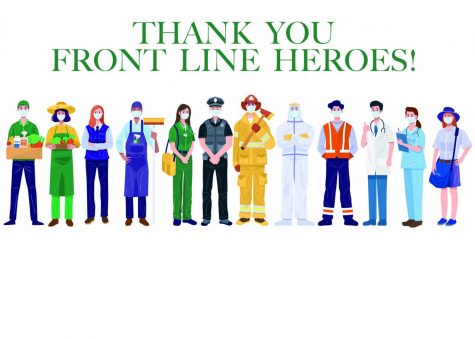Tis the season of Seasonal Affective Disorder
Heavy cold snow is falling, the sky is dark and gray, and the freezing wind is blowing. Outside everyone is struggling to push through the dreary ice and snow, but inside the school, students are also struggling in a different way.
According to an article written by students from GlenOak High school in Ohio, the midpoint of the school year marks a point of low motivation for many students. Whether it is caused by sports, schoolwork, or a dip in mental health, “winter slump” is real for many students.
Jennifer Titus, a NCSD tutor and educator says “The students I work with tend to have less energy, less enthusiasm, and are less engaged and productive during this time of year. The days and the winter months feel long and dreary.”
The struggle of balancing academics with sports and other extracurriculars can also be a factor. Within the walls of Kelly Walsh high school, some staff members have noticed that this is correct.
NCSD Therapist Sheri Wester says,“I definitely notice that students here experience a “winter slump.” I notice that the third-quarter slump is real not just for students, but also staff. Concentration is less, motivation is less, stress goes up and it’s a shift. I think that there might even be a difference in the mindsets and energy between students who participate in winter sports compared to others who do not.”
While some students’ mental health and energy can be boosted by engaging in winter sports, others find them to be an additional stressor at this time of year. Freshman Ella Soliz says that “I put way more pressure on myself to get my work done and to make sure I keep my grades up. I sometimes can even lose sleep from having to finish homework.”
Additionally, lack of motivation, anxiety, stress, and feeling pressure at this time of year are actually fairly common in students. They can all be symptoms of seasonal affective disorder.
According to kidshealth.org, seasonal affective disorder (SAD) happens to a person at a specific time of year. A person can become depressed in the fall or winter or when the days are shorter and it gets dark earlier. This disorder is brought on by the brain’s response to the seasonal changes and the daylight hours. Hillside Atlanta which specializes in helping young people navigate mental health challenges states that approximately 5% of the adult population experiences full-fledged SAD and an additional 10-20% suffer from a milder form of the disorder. It is a condition that can be more serious than people realize.
The American Academy of Family Physicians reports that because SAD usually starts in young adulthood, teenagers and adolescents are at risk. Some of the symptoms can include changes in mood, negative thinking, lack of enjoyment, low energy, changes in sleep and trouble focusing. The severity of the symptoms can depend on each individual. AAFP states that shorter days and longer hours of darkness can cause higher levels of melatonin and can create the conditions for seasonal depression. For some students, it can also affect schoolwork, grades and concentration. They may experience higher levels of stress, anxiety and depression during this time of the year.
Kelly Walsh Freshman Sarah Klosterman says that “Yes this is true. I find myself more productive in the summer and during the winter I feel more worn out. My mood is definitely more affected in school.”
This disorder can affect students everywhere, and at this time of year it is starting to become more prevalent in high school students.
Haley Todd, a former high school vice principal in Denver, Colorado says, “I do think that students experience a ‘winter slump’ after the holidays. Teachers like to joke about DEVOLSON, the Dark Evil Vortex of late September, October, November. This is when the ‘honeymoon’ phase of excitement at the beginning of the school year wears off and the long stretch of the semester sets in. I think the same can be said of late January and throughout the winter months with the stretch to more light and up until the spring months. Acknowledging it and finding tools and community to keep your stride and dedication can be the key to helping move through it.”
In addition, Marian University published an article with ways to cope with this winter disorder. Getting as much sunlight as possible, getting more exercise, and finding ways to manage stress are all good options to help control SAD. Everydayhealth.com also suggests prioritizing social activities, sticking to a set schedule, and trying to eat a balanced diet. If it gets to a severe point, consider talking to a doctor or a therapist.
The most important thing is to focus on the positive and know that you will get through it. It is already halfway through the school year and summer will be here before you know it!











